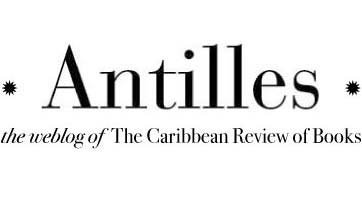2007 CRB books of the year
At the end of any calendar year, it's natural to find yourself thinking back over the high and low points of the preceding twelve months. Here at the CRB, we've found ourselves thinking, specifically, about the books we've been reading.
In 2007, the CRB reviewed a full sixty books, and "noticed" another thirty-odd in our "Also noted" column. That may represent just a half of all the Caribbean books published during the year. Because the CRB is a quarterly with a rather long lead-time, we'll be reviewing 2007 books well into 2008.
And of the dozens of books that have passed through our hands and our pages this year, which have we enjoyed best, or been most edified by? What were the stand-out Caribbean books of 2007, the ones we believe deserve a permanent place on our readers' bookshelves? Over the last week, we've done a rough poll of the magazine's editors and contributing editors, and come up with a collective list of our "books of the year". In what we hope will become an annual year-end tradition, we offer their names here, for the sake of those readers who may have overlooked them in the hurry and press of everyday.
The 2007 CRB books of the year, in alphabetical order:
Art and Emancipation in Jamaica: Isaac Mendes Belisario and His Worlds, by Tim Barringer, Gillian Forrester, Barbaro Martinez-Ruiz, et al (Yale Centre for British Art/Yale University Press)
This lavish catalogue of an exhibition that opened in October at the Yale Centre for British Art looks at the work of Belisario in the context of eighteenth- and nineteenth-century topographical drawing and painting, and the iconography of slavery and emancipation. (Look out for a review in the February 2008 CRB.)
The Brief Wondrous Life of Oscar Wao, by Junot Díaz (Riverhead)
The long-awaited first novel by the author of the short story collection Drown tackles the horrors of the Dominican Republic's modern history, the trials of immigration and diaspora, and the mysteries of fuku americanus, the Curse of the New World, with a linguistic verve that is Caribbean and American and also something in between. (Look out for a review in the February 2008 CRB.)
Brother, I'm Dying, by Edwidge Danticat (Knopf)
Catalysed by the death of Danticat's uncle Joseph while in the custody of US Immigration in Miami, this heartbreaking memoir describes a family caught in a cultural, historical, and political crossfire. (Look out for a review in the February 2008 CRB.)
An Eye for the Tropics: Tourism, Photography, and Framing the Caribbean Picturesque, by Krista A. Thompson (Duke University Press)
A wryly intelligent examination of the ways that postcard and poster depictions of the Caribbean have influenced and been influenced by the island's tourist economies, by a young Bahamian art historian. (Reviewed by Melanie Archer in the August 2007 CRB.)
Four Taxis Facing North, by Elizabeth Walcott-Hackshaw (Flambard Press)
Walcott-Hackshaw's first book of short stories takes an unsparing, un-nostalgic look at the here-and-now of contemporary Trinidad, from an urban middle-class female perspective still rare in Anglophone Caribbean writing. (Look out for a review in the February 2008 CRB.)
From Harvey River: A Memoir of My Mother and Her People, by Lorna Goodison (McClelland and Stewart)
A family memoir by Jamaica's most important living poet, sharing with her poems their gentle wisdom, their understated lyricism, and their sense of how marvellous the real can be, and how real the marvellous. (Look out for a review in the May 2008 CRB.)
Ragamuffin, by Tobias S. Buckell (Tor)
This speculative fiction novel combines a perfectly paced plot and compelling characters with a powerful and very Caribbean allegory about personal independence and intellectual autonomy. (Reviewed by Lisa Allen-Agostini in the November 2007 CRB.)
Selected Poems, by Derek Walcott, ed. Edward Baugh (Farrar, Straus and Giroux)
A distillation of the work of the Caribbean's great--greatest?--poet by one of his foremost readers and interpreters. (Reviewed by Brendan de Caires in the May 2007 CRB.)
There Is an Anger that Moves, by Kei Miller (Carcanet)
This second collection of poems by the promising and prolific Jamaican writer demonstrates an already distinctive voice and a rapidly maturing talent. Miller's first novel will be published in 2008. (Look out for a review in the May 2008 CRB.)
***
And what were your favourite books of 2007, dear readers? Tell us in the comments below.









